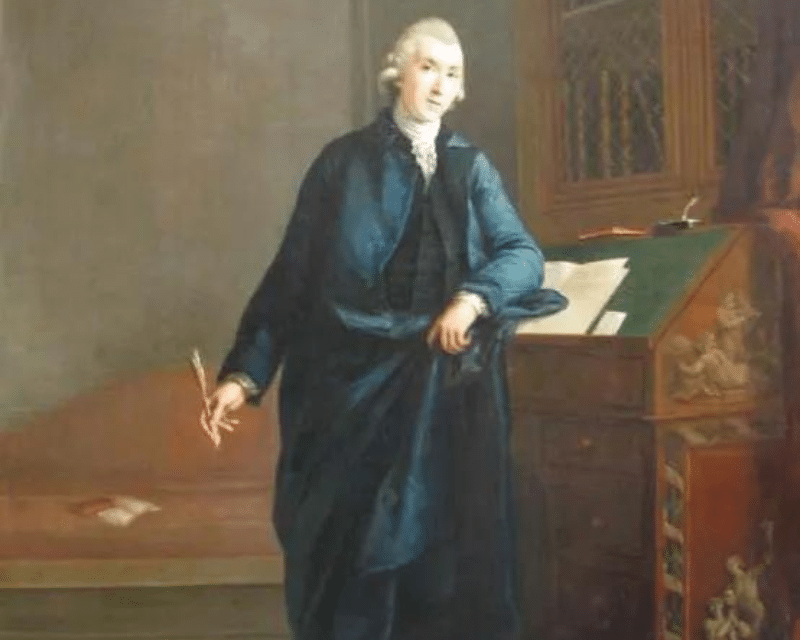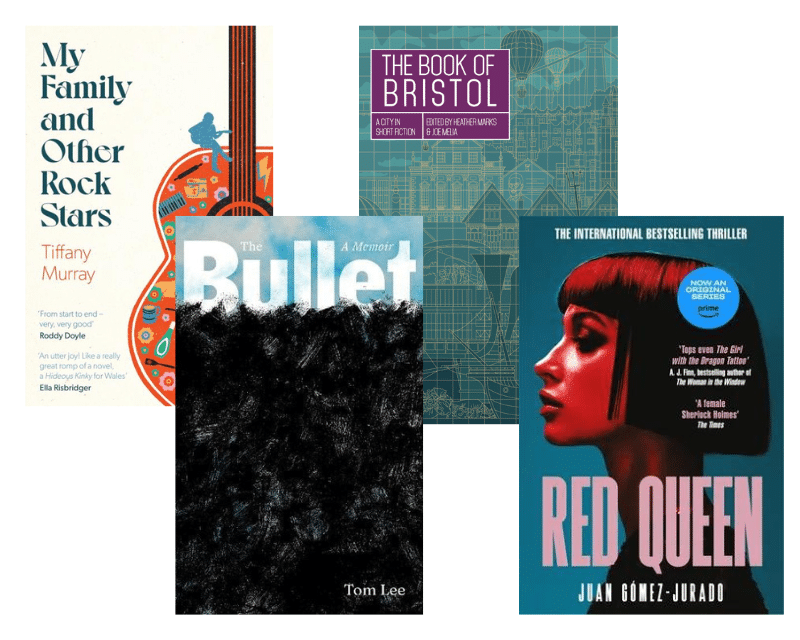- Collected
- Article
Pseudonyms
Behind the author’s mask

- 9 October, 2017
- John Pilkington
‘A self-made man may prefer a self-made name,’ the American judge and philosopher Learned Hand (1872–1961) is quoted as saying. He was referring to the movie mogul Sam Goldwyn, who changed his name from Samuel Goldfish. The same might be said of authors: to be published is to enter the profession, to present yourself to the world at large — perhaps even to reinvent yourself. Perhaps that is why Learned Hand sounded suspiciously like a pseudonym itself to me, until a check revealed that it was indeed the judge’s real name. While researching this subject I began seeing noms de plume everywhere, and experienced a slight sense of disappointment on discovering that Pearl Buck, Rumer Godden and Booth Tarkington are also genuine names.
My own early forays into fiction – two short novels – were published under a pseudonym. I was turning from playwriting to prose and had the idea of trying my hand at a Western story, partly as a way of practising the craft, and because I thought it might be fun. It was. More surprisingly, I found a publisher, who expected me to use a pseudonym. All their writers did so, I was told; and none of their readers would buy a Western with a name like mine on the jacket. The author should sound American, rugged and very male: think Max Brand or J. T. Edson. I soon learned that some of their writers published under many different names, turning out several books a year (it was the only way to make any money in that particular genre). I did one more Western before deciding that – like the genre – writing under a pseudonym didn’t suit me, and since then I have published under my real name. Yet the experience was instructive, leaving me with a fascination for pseudonyms — or more precisely, how and why people use them.
It is clear that a desire for concealment exists among some authors. There are true introverts who shun the limelight, there are some who fear the distractions of even a slight degree of fame, there are others who employ writing names for personal, commercial or pragmatic reasons. Even a cursory investigation reveals the ubiquity of the practice. Most people know that George Orwell’s real name was Eric Blair, that Joseph Conrad was Jósef Korzeniowski, or that John Le Carré is David Cornwell. Fewer may be aware that Katherine Mansfield was really Kathleen Beauchamp, or that Christopher Fry was Arthur Hammond Harris. Alexandre Dumas, to pick another at random, was born Alexandre Dumas Davy de la Pailleterie (like Fry, he took the surname from a grandmother). While readers of classic children’s fiction may share my surprise on learning that Susan Coolidge, author of What Katy Did, and Frank Richards, creator of Billy Bunter, are both pseudonyms (respectively, for Sarah Chauncey Woolsey and Charles Harold St John Hamilton).
It seems the practice of adopting a pseudonym has a long history. In times when writing was generally the preserve of the better-off, it was often a matter of fashion and of convention. The seventeenth-century poet Katherine Philips, for example, wrote as ‘Orinda’ when classical-sounding names were in vogue; the same was true across the English Channel, Madeleine de Scudéry using the name ‘Sapho’. The origin of the sobriquet Molière (Jean-Baptiste Poquelin) remains more obscure; it may have been taken from a town name. A fondness for one-word names continued, from Stendhal (Marie-Henri Beyle) to Saki (H. H. Munro). By the nineteenth century the use of pseudonyms was rife; Stendhal, who employed a German place name as his nom de plume, is known to have used at least a hundred and seventy others. It might be said that many of these authors were not attempting serious disguise. But others had sound reasons for concealing their identities; writing satire, for example, carried the risk of retribution, even arrest. Daniel Defoe, famous for dissenting tracts and political pamphlets as well as for his novels, employed at least one hundred and ninety pseudonyms (including, perhaps with some feeling, ‘Tom Bankrupt’). It is quite understandable why former intelligence officer David Cornwell used one, or why Steven B. Mitchell, ex-SAS soldier, writes his realistic military thrillers as Andy McNab.
Rather than choose a pseudonym other writers have published anonymously, especially early in their careers. Their reasons are personal and varied: perhaps a lack of confidence, or a wish to avoid causing offence. Tennyson, Browning and Conan Doyle are among the better-known authors who have published anonymously, as well as, surprisingly enough, Thomas Hardy, with Desperate Remedies (1871) and Far from the Madding Crowd (1874). But then commercial and practical considerations come into play. In the nineteenth century it was very difficult for female authors to find a publisher, leading to many adopting male pseudonyms — most famously perhaps the Brontë sisters. Having first appeared as Acton, Currer and Ellis Bell, matching their own initials, they later published under their own names. Mary Ann Evans, by contrast, remained George Eliot, just as in France Amandine Aurore Lucile Dupin remained George Sand.
We may live in more egalitarian times, but the practice of women using male writing names has persisted, if sometimes in modified form. Those fans of Star Trek who assume the writer D. C. Fontana is male, might be interested to learn that she is actually Dorothy Catherine Fontana. Other female authors (and some male authors, too) have chosen to use gender-neutral initials — from P. D. James to contemporary crime authors like C. J. Box and E. G. Rodford. Meanwhile the real identity of successful Italian novelist Elena Ferrante continues to intrigue. There has even been speculation that ‘Elena’ may be a man which, whether true or not, reminds us that male authors have sometimes used female pseudonyms. Madeleine Brent, creator of the popular heroine Modesty Blaise, was in fact the prolific author Peter O’Donnell, who also published under his own name. The real identity of Scottish writer Fiona MacLeod did not emerge until after her death in 1905: ‘she’ was the poet William Sharp. Perhaps the award for longest-kept nom de plume should go to another poet, Pietro Aretino (1492–1556), whose name merely refers to his place of origin (Arezzo). Despite achieving fame, and having his portrait painted by Titian, his true identity remains a mystery.
The largest category of pseudonym use remains that in popular or ‘genre’ fiction. Writers of romantic novels almost invariably use them; it is accepted practice, enabling some to write under several names, and men to write as women, since the readership of those books is almost entirely female. Prolific crime authors have sometimes chosen to spread their output over several identities. Agatha Christie wrote as ‘Mary Westmacott’, and Ian Rankin as ‘Jack Harvey’. Some authors make only a token distinction, like the late Iain Banks, who published his science fiction as Iain M. Banks. Others have felt the need to draw a distinction between their ‘serious’ work and the less serious — between the vocational and the commercial. It is no secret that Cecil Day Lewis (poet laureate from 1968–72) wrote successful detective stories as ‘Nicholas Blake’.
On a different note, readers of Scandinavian crime fiction, much in vogue now, may know that Swedish author Lars Kepler is actually two people (married couple Alexander and Alexandra Coelho Ahndoril). Most prolific of all perhaps was John Creasey, whose five hundred and sixty-two books (some sources suggest an even higher figure) appeared under many pseudonyms, from around a dozen to more than twenty, depending on whom one consults. When one’s output is so large, it may be wise to avoid the appearance of flooding the market.
The field of pseudonyms is vast and still thriving, even if in our world of social media it is increasingly difficult to keep secrets. Robert Galbraith, whose debut detective novel The Cuckoo’s Calling appeared in 2013, was quickly unmasked as J. K. Rowling; how long street artist Banksy can preserve his disguise remains to be seen. Then, perhaps it is the work that matters most, not the identity of its creator; I’ve even heard it said that a pseudonym is a cop-out. Shouldn’t any author who wants to be published be prepared to stand up and be counted?
In my own experience, being published under a pseudonym produces mixed feelings. On the one hand you may be disappointed that you aren’t recognised as the author of the work; on the other, you may be relieved that you aren’t: it depends on the work. Nowadays I’m content – and relieved – that my first books appeared under another name; I would hate to be judged by those embryonic efforts today.
.
You might also like:
The Life and Times of Reverend David Williams
As we get ready to celebrate our 234th anniversary on 18 May, a recent RLF grant beneficiary takes a deep…
Anywhere But a Room of One’s Own
I am a writer looking to be re-homed. All I need is a laptop, a table and a chair, and…
RLF Fellows’ News: May 2024
Publishing RLF Fellow Tom Lee’s new book, The Bullet, his memoir about family and mental health, has recently been published…


